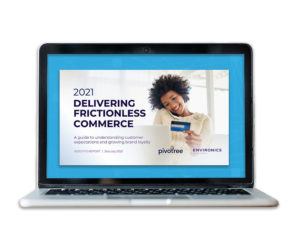In 2020, online marketplaces captured over half of the eCommerce sales, proving once again that they’re a favorite source for buying and selling. One report found that online sellers can increase retail sales by 1,250% just by expanding to marketplaces.
However, there’s still a lot of confusion around how to sell effectively on these channels. In this commerce landscape, you should adopt a motto, “sell everything you can, everywhere you can.” But don’t forget this one important caveat — do it in a way that protects your brand.
Today, we’re going to look at the different ways enterprises can sell on marketplaces, some of the challenges that arise, and what you must do before expanding to these new channels.
No Shortage of Marketplace Options
Amazon 3P gets a lot of buzzes, but the marketplace environment encompasses so much more. Let’s look at the various options to dip your feet into the marketplace pool.
Broad Third-Party Marketplaces
Think Amazon, Walmart, and Alibaba. These sites draw huge, diverse crowds looking to buy anything and everything. Some companies sell on these sites to reach new customers, while others seek to reach their own customers who are already there. Regardless, organizations need to enter these broad marketplaces with a data-driven approach. You may have assumptions about the type of customers that buy from you on these channels. Based on the data you collect, you can validate (or invalidate) these assumptions.
Industry-Specific Marketplaces
While the big players are a go-to resource, shoppers also appreciate niche-specific sites. It often makes sense for companies to concentrate on industry-specific marketplaces with curated collections of targeted products. For instance, automotive and aircraft parts have well-established sites where customers in those markets gravitate.
Marketplace Building Software
Do you want to control a marketplace and build it to your specifications? You can use build-it-yourself software to create a new marketplace. This is not a replacement for your existing digital commerce platform. Instead, it’s a marketplace where you can offer products that complement what you produce and sell. The benefits? Delivering an endless aisle experience to your customers; plus, gaining additional revenue without the logistical complications of carrying more inventory.
Built-In Marketplaces
Some commerce solutions allow you to create a marketplace right from their platform. So, if you are already using the platform for your storefront, you have the capability to add a marketplace. Or, if you’re looking for a new commerce platform and want to build a marketplace, you can choose a platform that allows you to do both. Our partner, VTEX, is one such solution.
The Challenges You Might Encounter
With so many options for new sales channels, marketplaces may seem like a perfect opportunity to add to your bottom line. But many companies overlook a major challenge: marketplaces create a direct-to-consumer retail engagement, and that can be a very different business model for B2B companies.
Many of the costs of marketplace sales are unfamiliar to B2B companies. Instead of performing their own fulfillment and selling wholesale, they have to pay the third party for the fulfillment, as well as pay sales tax. Many enterprises underestimate those costs and how much margin they eat up.
Another surprise for new marketplace sellers is the effort involved in customer service and returns. Different marketplaces have varying return policies, which can create complications with return processes. Ultimately, a poor return experience can erode customer trust in your brand, regardless of who’s at fault.
The Fundamentals You Need to Succeed
Expanding into marketplaces can be an excellent tool for growth, but only if your business fundamentals are sound. You must know your customers, understand your value proposition, have sound branding practices, and possess mature processes.
Yet perhaps the most critical element is being data-driven, supported by a Master Data Management (MDM) or Product Information Management (PIM) program.
Having a golden record means your product information is ready and can be fed into the marketplace. Content syndication and digital assets — such as videos, manuals, images, etc. — are all easy to reference and include on third-party sites. And, your data hygiene won’t become an issue as you scale your products and channels.
The same goes for your CIM or CRM. A single view of customer data means you’ll be better prepared to engage with your customers wherever you find them
Finally, you’ll have the automated processes you need to stay agile and scale across marketplaces — without bogging down your resources and staff.
Preparation – Where Do You Start?
At Pivotree, we have experience getting top brands prepared for long-term digital commerce success. If you’d like help getting your data ready to scale to multiple channels or marketplaces, we can guide you along a proven path. To discuss how our team can bring your company into the next era of digital transformation, contact us here and one of our commerce experts will be in touch.
—–
Businesses like yours are laser-focused on staying agile and delivering the frictionless commerce experiences your customers demand. We know this requires a shift in mindset – but that mindset alone is not enough. To help companies shift to frictionless thinking, we’ve developed a research paper in partnership with Environics — Delivering Frictionless Commerce: A guide to understanding customer expectations and growing brand loyalty.
To help companies shift to frictionless thinking, we’ve developed a research paper in partnership with Environics — Delivering Frictionless Commerce: A guide to understanding customer expectations and growing brand loyalty.


